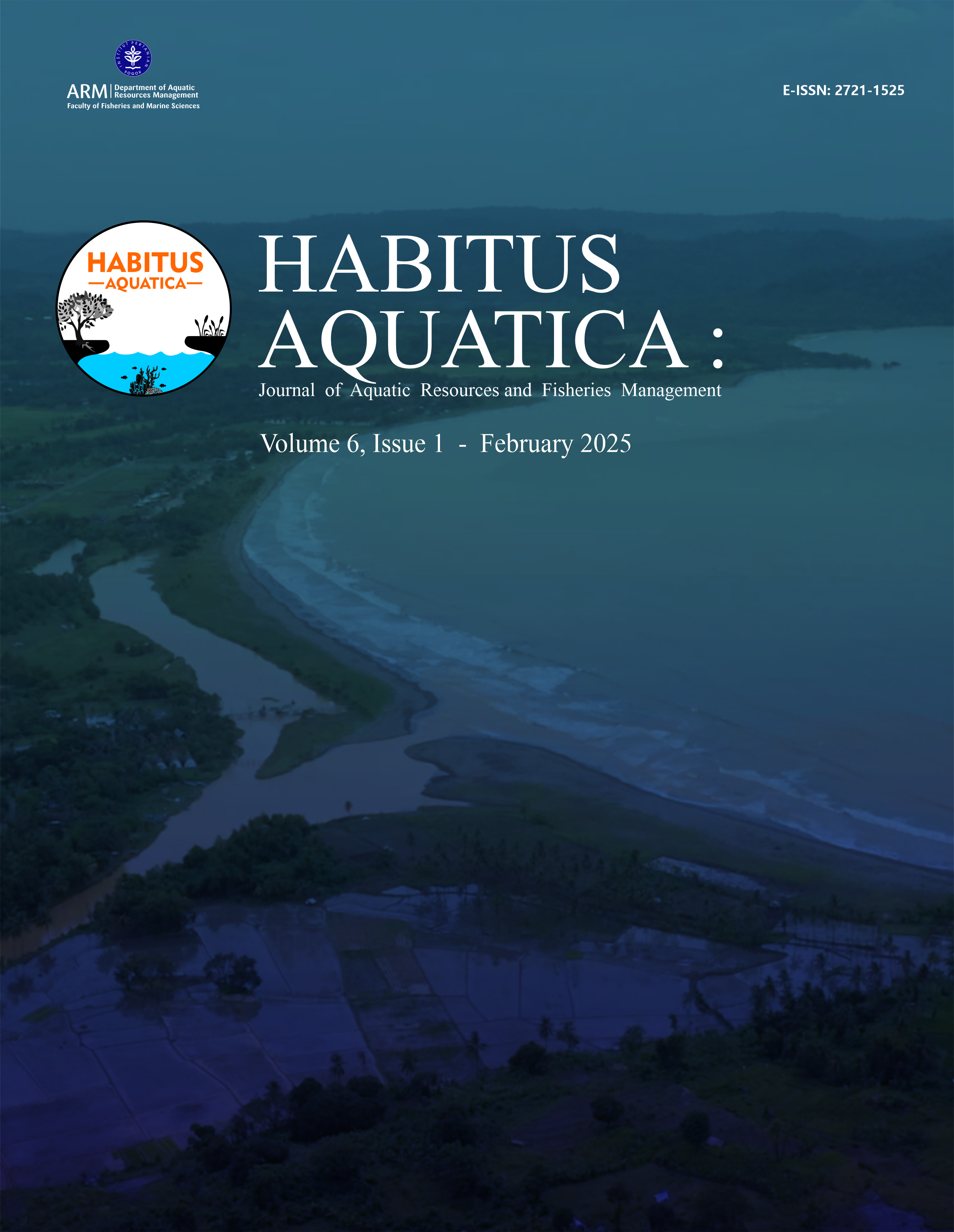Microbiological Testing for Bacteria Salmonella sp. on Tilapia (Oreochromis niloticus) Using ISO 6579-1:2017 Method at UPTD PPMHP Banten
Pengujian Mikrobiologi Bakteri Salmonella sp. pada Ikan Nila (Oreochromis niloticus) dengan metode ISO 6579-1: 2017 di UPTD PPMHP Banten
Abstract
Fish is a food source that is available in large quantities in Indonesia. Indonesia's fisheries production is recorded as occupying the third largest position with total production of 6.43 million tons in the world (FAO 2022). Tilapia is a perishable food so it needs to be handled well so that the freshness of the fish is maintained. The quality of freshness can include appearance, taste, smell and texture which will be consciously or unconsciously assessed by buyers or users of the product. Apart from the freshness and high nutritional value of tilapia, there are aquatic pathogenic microorganisms that can cause disease in humans, for example nausea, diarrhea and stomachache. The presence of microbes in fish can affect quality, such as reducing the freshness of fishery product quality and consumer welfare. Pathogenic bacteria that are often found include Salmonella sp. UPTD PPMH Banten is the organizer of quality control and safety of certified fishery products as well as a quarantine center for microbiological testing of pathogenic bacteria in fishery products, one of which is Salmonella sp. The purpose of the test is to find out the correct testing procedures and according to the procedures, to find out the results of the analysis of Salmonella sp. contamination. on tilapia. Microbiological testing method for Salmonella sp. bacteria. carried out by referring to the standard procedure ISO 6579-1:2017. Results of microbiological testing for Salmonella sp. with the addition of ATCC: 14028 Salmonella Typhi culture in tilapia fish showed positive results for Salmonella sp..
Downloads
References
Arsinawati Y, Susanto A. 2016. Identifikasi Salmonella sp. pada telur ayamras. Journal of Insan Cendikia. (4):34–38.
Azara R. dan Saidi A. (2020) Mikrobiologi Pangan. Sidoarjo: UMSIDA Press.
Effendi MH, Helmi AM, Mukti AT, Soegianto A. 2020. A Review of Salmonella sp. in Tilapia fish (Oreochromis niloticus). Public Health Importance. Sys Rev Pharm 2020;11(10):819-826.
FAO. 2022. The State of World Fisheries and Aquaqulture 2022. Blue Transformation. Food and Agriculture Organization. Rome.
Feng P. 2007. Bacteriological Analytical Manual (BAM) Salmonella. Journal Food Science Reaserch. Vol. 7:49. China.
Huss H, Gram L. 2004. Assesment and Management of Seafod Safety and Quality. Food and Agriculture Organization of United Nation. Rome. Hal: 45-48.
Hyatt D, Weese J. 2004. Salmonella Culture: Sampling Procedure and Laboratory Techniques. Vet. Clin Am-Equine Publisher. New York. Hal: 57-85.
ISO 6579-1. 2017. Microbiology of theFood Chain – Horizontal Methode for the Detection, Enumeration and Sreotyping of Salmonella. Part 1: Detection of Salmonella spp. International Standard Organization. Gevena, Switzerland.
Copyright (c) 2025 Habitus Aquatica

This work is licensed under a Creative Commons Attribution-ShareAlike 4.0 International License.
Authors submitting manuscripts should understand and agree that copyright of manuscripts of the article shall be assigned/transferred to Habitus Aquatica Journal. This work is licensed under a Creative Commons Attribution-ShareAlike 4.0 International License (CC BY-SA). Therefore, Authors and Readers are permitted to share — copy and redistribute the material in any medium or format, and adapt — remix, transform, and build upon the material for any purpose. However, they must give appropriate credit, provide a link to the license, and indicate if changes were made. If you remix, transform or build upon the material, you must distribute your contributions under the same license as the original.


















